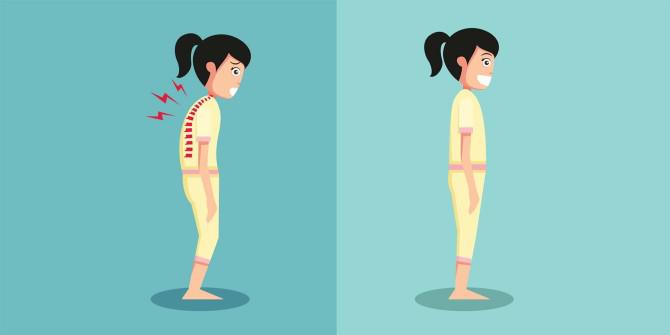#92 Your Posture Is Not Your Fault
#92 YOUR POSTURE IS NOT YOUR FAULT

When I talk to patients about their posture, many will hang their heads and remark something like “I know, it’s bad” or “I need to work on my posture.” Many of these patients think that their “bad” posture is entirely their fault. Nothing could be further from the truth. Like breathing, posture is a function of the body that is primarily regulated by the unconscious control centers of your brain. That means most of the time, you are not in control of your posture. So, what is controlling your posture, and can your posture be changed?
When you get out of bed in the morning, your nervous system and musculoskeletal system have the enormous task of balancing the body upright in a force field called gravity. Yet most of us do this task without thinking. How does your body do it? The answer starts in your muscles and ends in your brainstem and cerebellum. Let’s take a closer look.
When we think of sensory organs in the body, we automatically think of the eyes, ears or tongue, but your muscles are actually the largest network of sensory organs in the body aside from the skin. More than 50 percent of the nerves in the cerebellum and brainstem are solely dedicated to posture and proprioception. Without this immense neural dedication to posture, your neck would have to be the size of a tree trunk just to balance your head in day to day activities.
Inside the belly of your muscles are sensory organs called muscle spindle fibers. They are constantly measuring tension and sending that measurement back to the cerebellum. The brainstem and cerebellum then send a signal back to the contractile cells of the muscle to either tighten up or relax a little. This dance is done constantly with every muscle in your body, regulating your posture as your stand in gravity.
If there is increased tension on the brainstem or the spinal cord, both the descending and the ascending nerve signals controlling muscle tone become distorted. This will actually change where your brainstem and cerebellum perceive its center of gravity. This proposed scientific mechanism is formally known as the dentate ligament cord distortion hypothesis proposed by Dr. Grostic in the 1980’s and is the scientific basis for most upper cervical chiropractic techniques such as NUCCA.
What does this mean in layman’s terms? It means that when I tell most patients to stand straight, they stand crooked because no one has released the tension they have at the brainstem level. As a clinician, I see posture patterns change in real time when the tension in a patient’s body is released.
But can we actually change your posture instantly after one NUCCA adjustment? With most patients, the answer is yes. We’ve done it for countless patients suffering from the effects of a crooked posture. For most people, poor posture and its side effects are not your fault and can be changed with a specific NUCCA adjustment.

